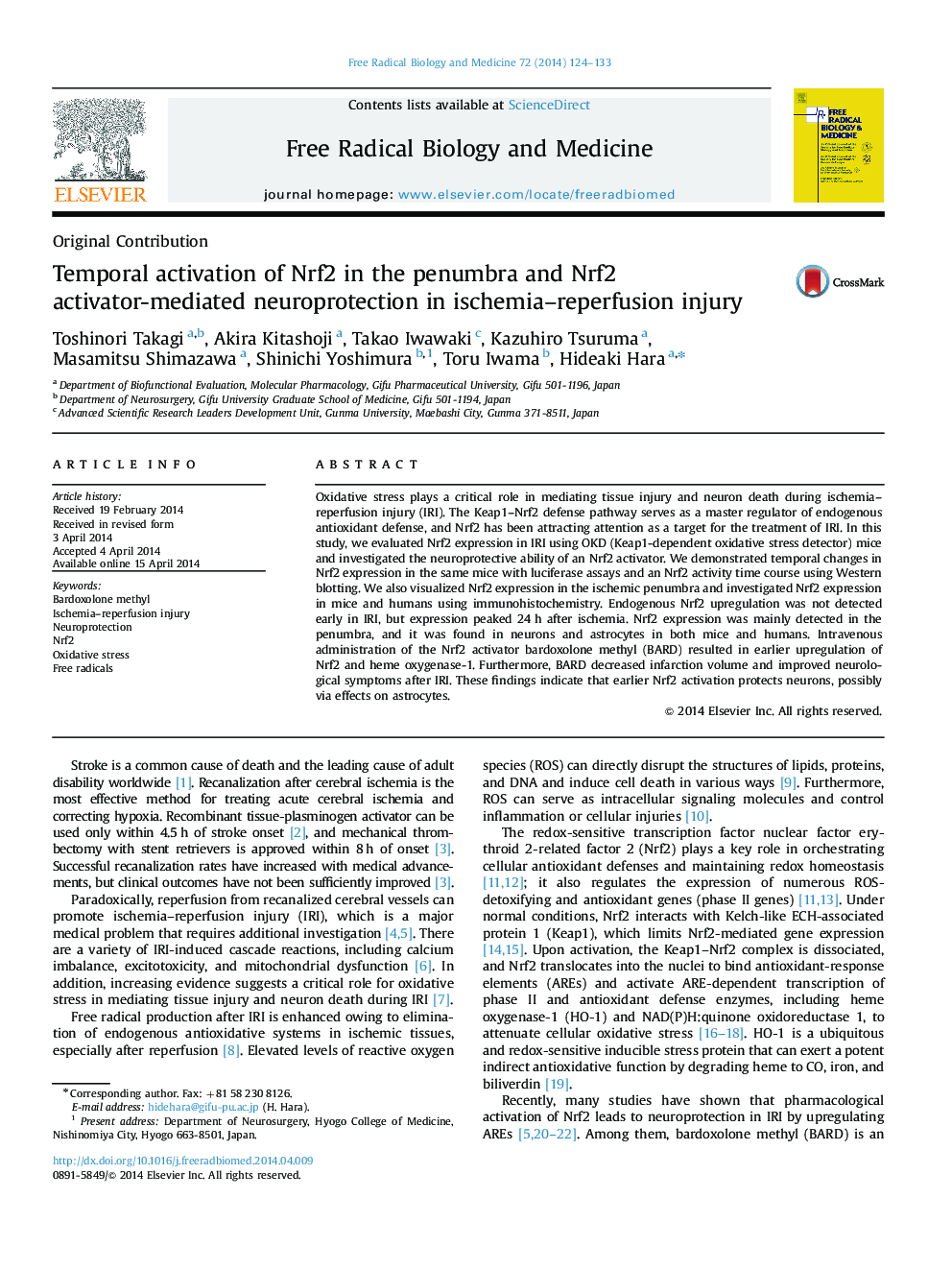| Article ID | Journal | Published Year | Pages | File Type |
|---|---|---|---|---|
| 8270209 | Free Radical Biology and Medicine | 2014 | 10 Pages |
Abstract
Oxidative stress plays a critical role in mediating tissue injury and neuron death during ischemia-reperfusion injury (IRI). The Keap1-Nrf2 defense pathway serves as a master regulator of endogenous antioxidant defense, and Nrf2 has been attracting attention as a target for the treatment of IRI. In this study, we evaluated Nrf2 expression in IRI using OKD (Keap1-dependent oxidative stress detector) mice and investigated the neuroprotective ability of an Nrf2 activator. We demonstrated temporal changes in Nrf2 expression in the same mice with luciferase assays and an Nrf2 activity time course using Western blotting. We also visualized Nrf2 expression in the ischemic penumbra and investigated Nrf2 expression in mice and humans using immunohistochemistry. Endogenous Nrf2 upregulation was not detected early in IRI, but expression peaked 24Â h after ischemia. Nrf2 expression was mainly detected in the penumbra, and it was found in neurons and astrocytes in both mice and humans. Intravenous administration of the Nrf2 activator bardoxolone methyl (BARD) resulted in earlier upregulation of Nrf2 and heme oxygenase-1. Furthermore, BARD decreased infarction volume and improved neurological symptoms after IRI. These findings indicate that earlier Nrf2 activation protects neurons, possibly via effects on astrocytes.
Keywords
Related Topics
Life Sciences
Biochemistry, Genetics and Molecular Biology
Ageing
Authors
Toshinori Takagi, Akira Kitashoji, Takao Iwawaki, Kazuhiro Tsuruma, Masamitsu Shimazawa, Shinichi Yoshimura, Toru Iwama, Hideaki Hara,
